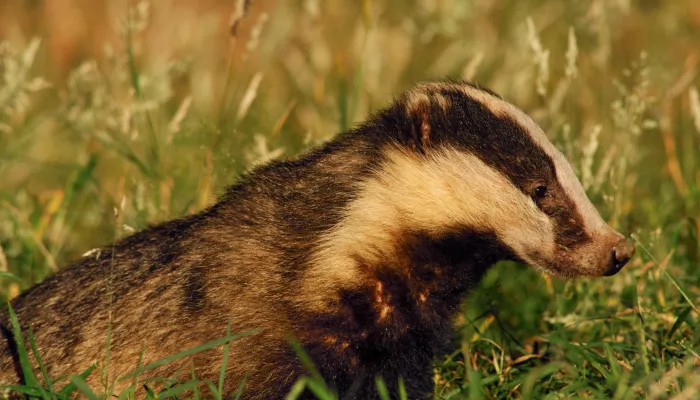
Kent’s wildlife on the brink: £3 million appeal launched to save nature
Kent’s wildlife on the brink: £3 million appeal launched to save nature

The Wildlife Trusts have proven that badger vaccination can tackle bTB in badgers.Ellie Brodie, Senior Policy Manager of The Wildlife Trusts
Ellie Brodie continues:
“Badger vaccination should be used strategically, with more resources invested to roll out a widespread vaccination programme. Vaccination has the potential to reduce bTB infection prevalence in the badger population [7], and hence bTB risks to cattle, without the harmful effects associated with culling such as increased prevalence of TB in badgers plus spreading the disease. [8,9]. The review highlights the potential for a large-scale badger vaccination programme as an alternative to culling which The Wildlife Trusts welcomes. The government should do more to support rolling vaccination out to more areas of the country.
The Wildlife Trusts have proved that badger vaccination can tackle bTB in badgers, and Wildlife Trusts have demonstrated it’s doable. Twelve Wildlife Trusts across England and Wales conducted badger vaccination programmes between 2011–2015.* In this time, we vaccinated more than 1500 badgers. The largest programme is run by Derbyshire Wildlife Trust who train lay vaccinators on behalf of the Animal and Plant Health Agency (APHA).
The Wildlife Trusts are ideally placed to work with the government and farmers to deliver wide-scale badger vaccination.
The Wildlife Trusts call on the Government to:
*Hampshire & Isle of Wight; South & West Wales; Shropshire; Gloucestershire; Leicestershire & Rutland; Staffordshire; Berks, Bucks & Oxon; Warwickshire; Cheshire; Derbyshire; Dorset, and Nottinghamshire.
More information about the badger cull is available on www.wildlifetrusts.org/badgers.
Wildlife Trusts that are currently leading on the vaccination of badgers include: Derbyshire Wildlife Trust, Berks, Bucks & Oxon Wildlife Trust; Nottinghamshire Wildlife Trust.
Whilst vaccination doesn’t cure a badger of bTB it does slow the progression of the disease in an individual animal, and lowers the likelihood that the infection will be passed on. Badger vaccination can reduce the chance that a badger will test positive for bTB by as much as 76% (1). The Wildlife Trusts welcome the Government’s announcement that there will be enough supplies of vaccine to allow Defra’s Badger Edge Vaccination Scheme to resume in 2018.
The Department for Environment, Food and Rural Affairs, Defra, has granted licenses in England to cull badgers where there’s a high risk of cattle being infected with bTB. Badgers are being culled because they can carry bovine Tb and pass on the disease to other animals; however, badgers are not the main route of infection for farmers’ herds - that comes from cattle to cattle contact. There are now 32 cull zones in the following counties: Cornwall, Devon, Dorset, Wiltshire, Gloucestershire, Herefordshire, Cheshire, Staffordshire and Somerset. This also includes one cull zone in a Low Risk Area in Cumbria.
There is unsatisfactory evidence to prove that the badger cull is working. This review, led by Sir Charles Godfray, referred to a study published in 2017 to show that wide-scale, non-selective badger culling is working [10]. This secondary analysis on a small dataset, suggests that culling might be reducing TB inside cull zones and increasing it on adjoining land, as in trial culls. However, the study’s authors cautioned that their findings should not be used to draw any conclusions about the effectiveness of the badger cull. Furthermore, results quoted by a Defra Minister in September 2018 drew conclusions based on data that hadn’t been properly analysed by an independent scientific body. This means that it is not possible to say that any reduction in bTB incidence has been caused by the badger cull as they could be down to other factors; from improved testing regimes to more effective cattle movement controls.
[1] Badgers are responsible for around 6% of all new bTB breakdowns in cattle. See: Donnelly, CA & Nouvellet, P., 2013. The Contribution of Badgers to Confirmed Tuberculosis in Cattle in High-Incidence Areas in England. PLoS Currents: Outbreaks. http://currents.plos.org/outbreaks/article/the-contribution-of-badger-to-cattle-tb-incidence-in-high-cattle-incidence-areas/
[2] Woodroffe, R et al., 2006. Culling and cattle controls influence tuberculosis risk for badgers. Proceedings of the National Academy of Sciences of the United States of America 103, 14713-14717.
[3] Woodroffe, R et al., 2009. Bovine tuberculosis in cattle and badgers in localized culling areas. Journal of Wildlife Diseases 45, 128-143.
[4] Donnelly, CA et al., 2006. Reduce uncertainty in UK badger culling. Nature, 439: 843-846.
[5] Donnelly, CA et al., 2003. Impact of localized badger culling on tuberculosis incidence in British cattle. Nature, 426: 834-837.
[6] Jenkins, HE et al., 2007. Effects of culling on spatial associations of mycobacterium bovis infections in badgers and cattle. Journal of Applied Ecology,44, 897-908.
[7] Carter, SP et al., 2012. BCG Vaccination Reduces Risk of Tuberculosis Infection in Vaccinated Badgers and Unvaccinated Badger Cubs. PLOS One, 7: e49833.
[8] Woodroffe, R et al., 2016. Ranging behaviour of badgers Meles meles vaccinated with Bacillus Calmette Guerin. Journal of Applied Ecology, 54: 718-725.
[9] Lesellier, S et al., 2006. The safety and immunogenicity of Bacillus Calmette-Guérin (BCG) vaccine in European badgers (Meles meles). Veterinary Immunology and Immunopathology, 112: 24-37.
[10] Brunton et al., 2017. Assessing the effects of the first 2 years of industry-led badger culling in England on the incidence of bovine tuberculosis in cattle in 2013–2015. Ecology and Evolution. 7: 7213–7230. Available here: http://onlinelibrary.wiley.com/doi/10.1002/ece3.3254/full

Kent’s wildlife on the brink: £3 million appeal launched to save nature

Kent Wildlife Trust is appealing for volunteers to help remove rubbish from Heather Corrie Vale nature reserve, Dareth Valley after cows were found to be grazing in areas strewn with litter.

A collaboration of conservationists is examining the feasibility of a Pine Marten reintroduction to the South East. People are being asked for their views on restoring the Pine Marten to the region.